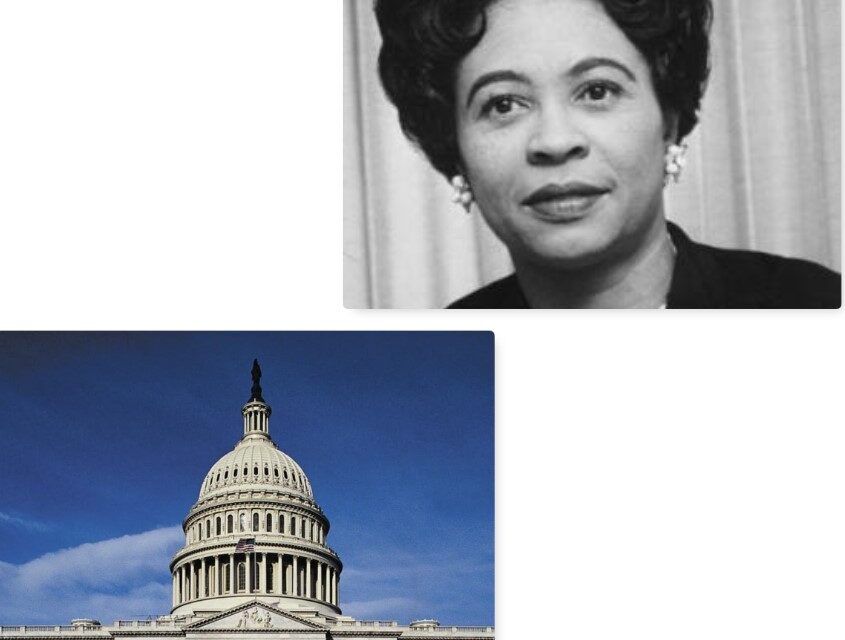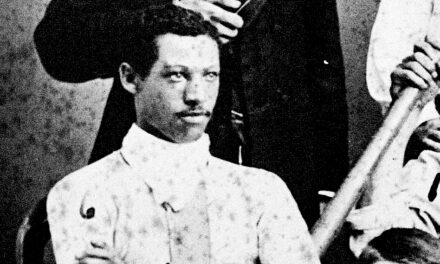By Ashlee Banks
Special to the AFRO
A statue of civil rights activist Daisy Gatson Bates will be unveiled at the National Statuary Hall in the U.S. Capitol on May 8.

U.S. Rep. Glenn Ivey (D-Md.) spoke with the AFRO ahead of the honor.
“The unveiling of her statue in the halls of Congress shows the arc of history bending towards justice,” said Ivey. “It is an honor to be a member of this body as we enshrine her legacy.
U.S. Jasmine Crockett, D-Texas also weighed in on what the recognition means in today’s time.
“Considering the current climate that we’re in as it relates to politics and race, it’s important that we remind people of our history. I think we need to consistently remind people of our history and what really matters,” said Crockett. “And hopefully we can find it in our hearts to recognize the future historians who are currently doing their part to better this country.”
U.S. Rep. Jamaal Bowman, D-N.Y. said that he is excited to see a statue of Bates at the U.S. Capitol.
“Those who do not know their history tend to repeat it,” said Bowman. “I feel like we’re in a moment where we may be repeating the horrors of the civil rights movement without the triumphs. This is an opportunity to celebrate the triumphs, keep working and looking for more triumphs.”
Bates was born in 1914 in Huttig, Arkansas and while she was an infant, her mom was murdered by three White men. That tragedy inspired her to become a civil rights icon who broke barriers.
In her fight for justice, Bates and her husband L.C. Bates launched “The Arkansas Weekly,” which was an African-American newspaper solely dedicated to the civil rights movement.
Bates took her advocacy a step further in 1954 after the U.S. Supreme Court ruled it unconstitutional for schools to remain segregated. Following the verdict, Bates ensured that Black students were able to attend all-White institutions and in 1957 she recruited nine students, known as the Little Rock Nine, to integrate at Central High School in Little Rock, Arkansas.
On Nov. 4, 1999, Bates passed away and President Bill Clinton posthumously awarded her with a Congressional Gold Medal.
“We all stand on the shoulders of the leaders of the Civil Rights Movement of the 1950’s and 1960’s,” said Ivey. “Daisy Bates’ work with the press and with the NAACP as it pertained to the integration of Little Rock’s Central High School and the Little Rock 9 makes her one of the early catalysts of change during those turbulent years.”
Crockett told the AFRO that stories like that of Bates are “a part of the fabric of who America is. When you talk about the greatness of America that’s what made America great. We never needed an orange man to make us great.”
“It was people like Daisy Bates, the people who weren’t seeking the glory, weren’t looking for cameras but really believed in doing the real work,” said Crockett. “The people that lived out what it meant to be a Christian, instead of using Christianity as a tool of war to oppress other people.”
A statue of American singer-songwriter Johnny Cash will be unveiled alongside Bates’ statue at the Capitol on May 8. Both statues are set to replace the statues of 19th-century politicians like attorney Uriah Rose and former James P. Clarke, a former governor and senator from Arkansas.
The post Little Rock Nine activist Daisy Bates to be honored with statue in U.S. Capitol appeared first on AFRO American Newspapers.











